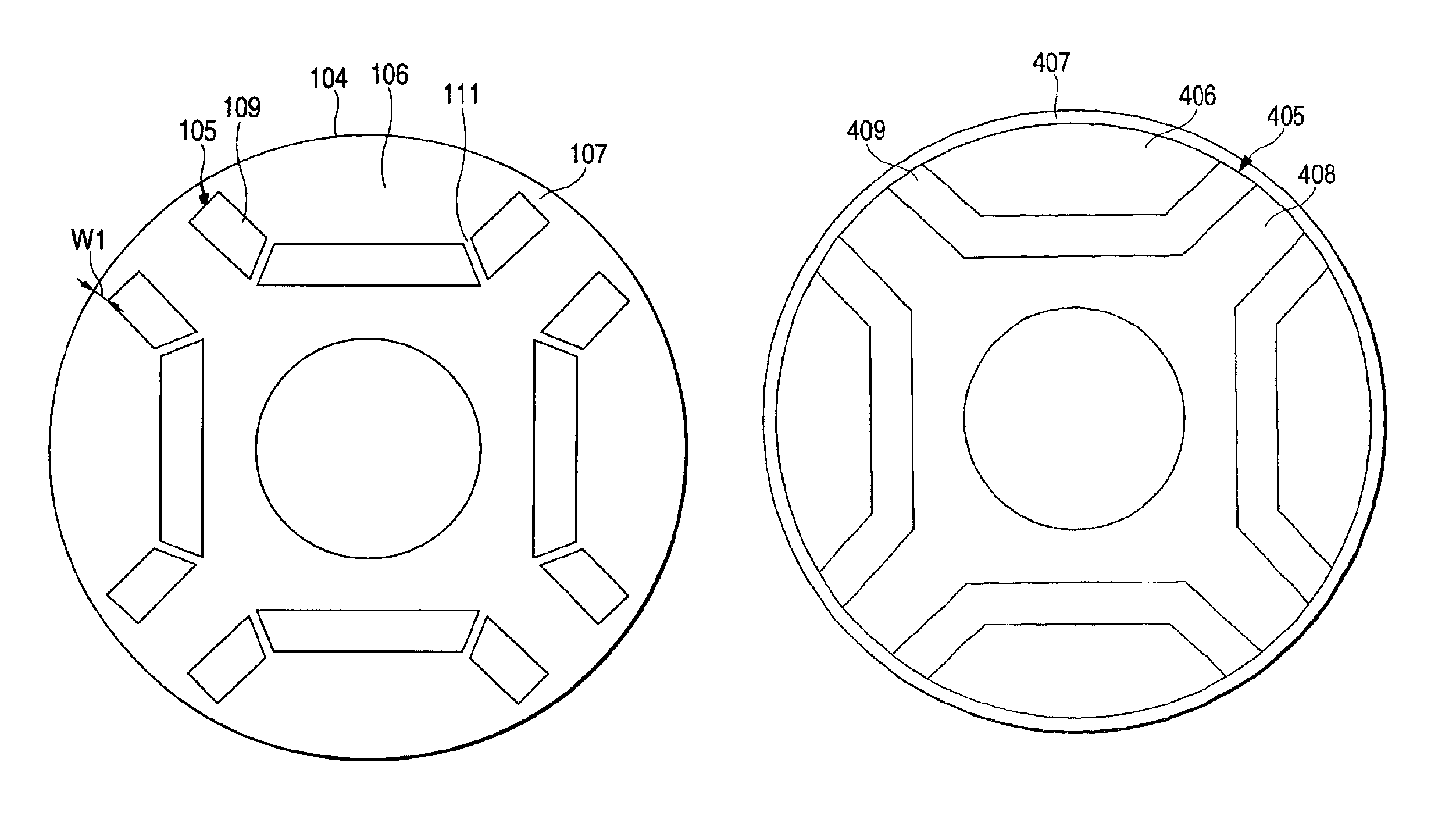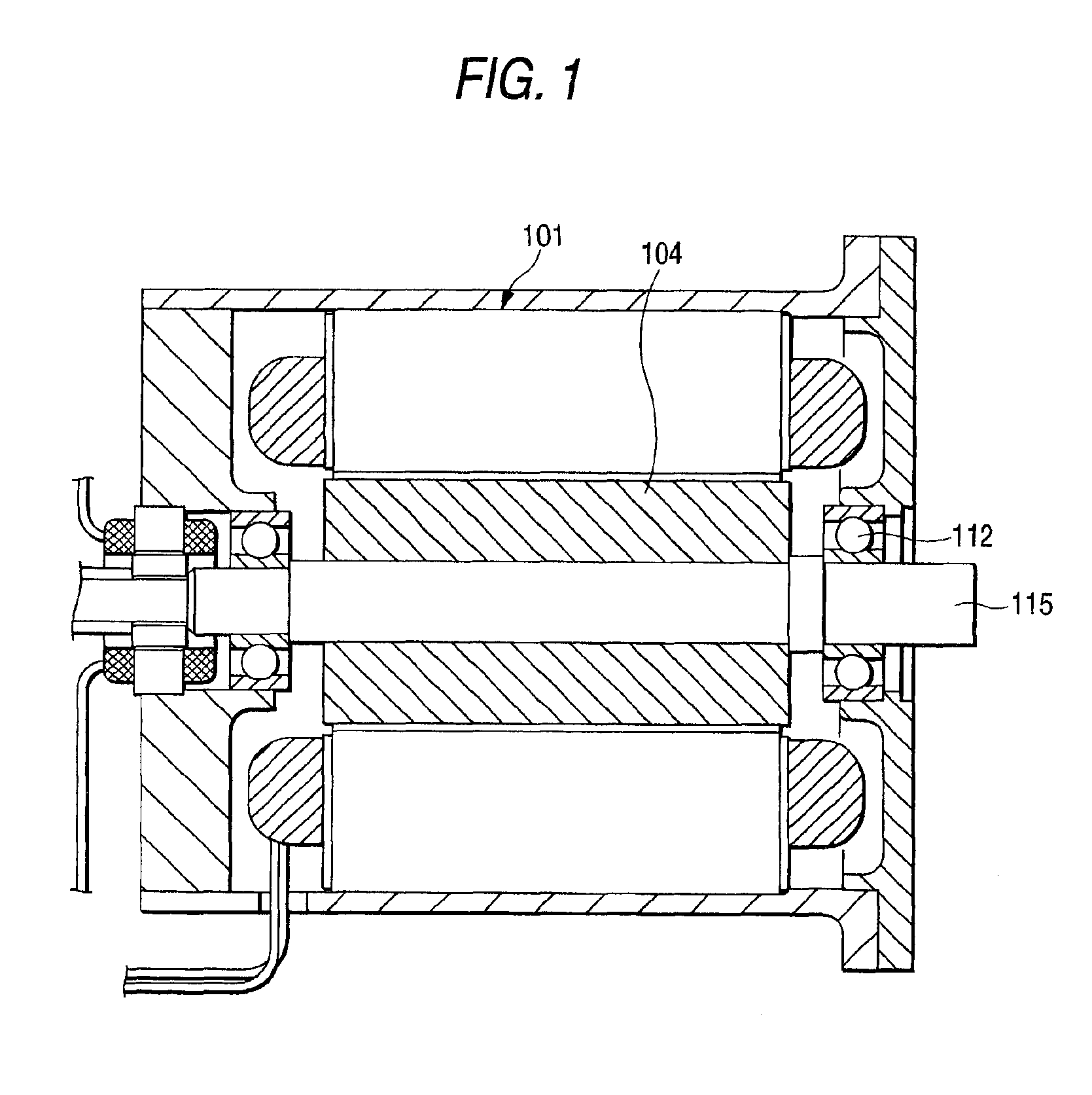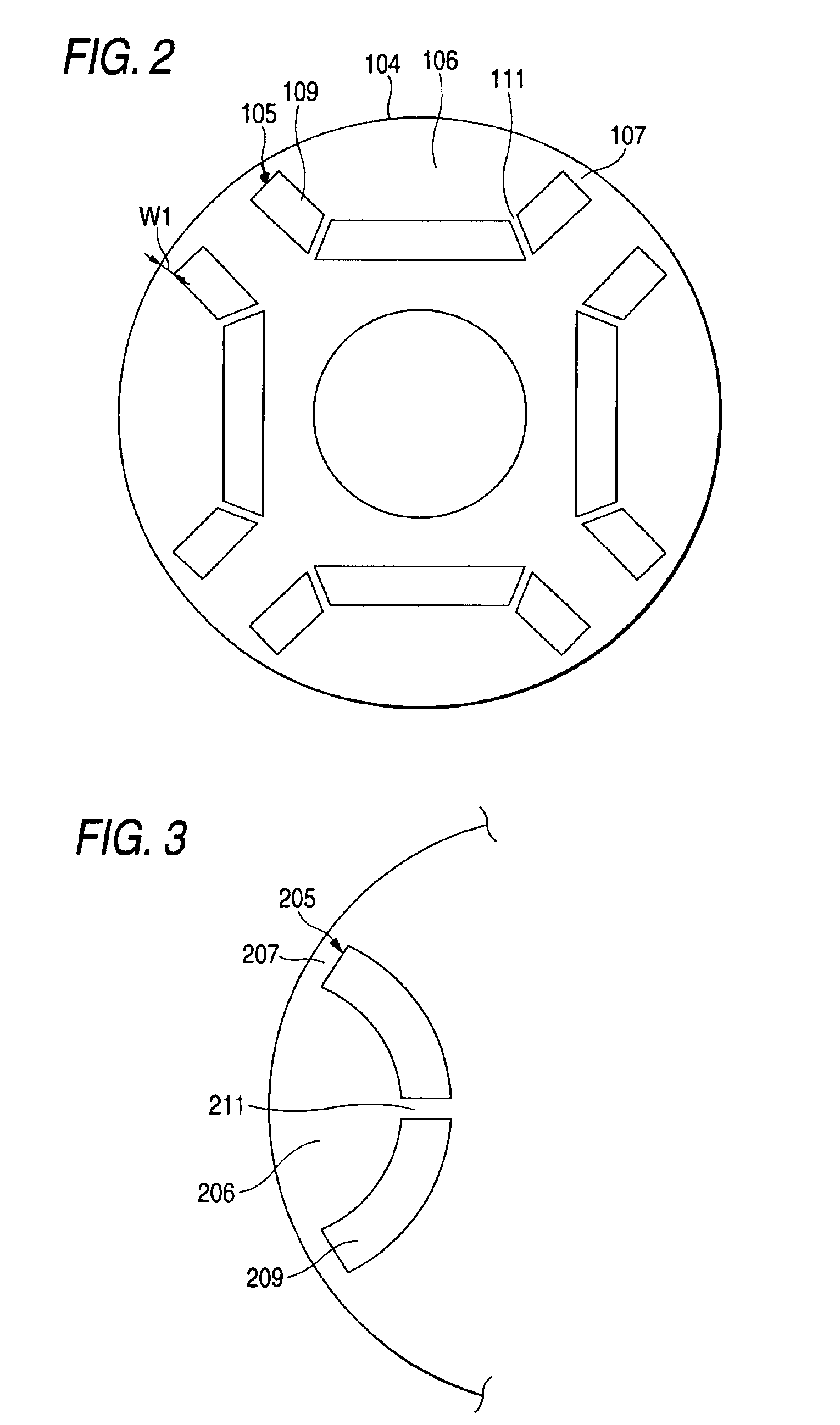Permanent magnet motor
a permanent magnet, rotor type technology, applied in the direction of magnetic circuit rotating parts, dynamo-electric machines, magnetic circuit shape/form/construction, etc., can solve the problems of reducing the energy density of the motor, speed, higher-torque motors, and unavoidable leakage of magnetic flux to the outer peripheral rib portions, so as to reduce the leakage flux
- Summary
- Abstract
- Description
- Claims
- Application Information
AI Technical Summary
Benefits of technology
Problems solved by technology
Method used
Image
Examples
first embodiment
[First Embodiment]
[0026]FIG. 1 is a sectional view illustrating a permanent magnet motor in accordance with a first embodiment of the invention. FIG. 2 is a cross-sectional view of a rotor core shown in FIG. 1. In FIG. 1, a rotor core 104 is disposed inside a stator core 101, and a motor output shaft 115, which rotates with the rotor core at the central axis of rotation of the rotor core, is fixed to the stator core by means of a bearing 112. In FIGS. 1 and 2, reference numeral 104 denotes the rotor core which is formed in a cylindrical shape by a single steel member or by laminating a multiplicity of punched steel plates. The rotor core 104 has a plurality of open trapezoidal shaped magnet insertion holes 105, and is provided with permanent magnets 109 which are inserted in the magnet insertion holes 105. Numeral 111 denotes a rib portion which prevents the centrifugal force acting in the permanent magnets 109 and a magnetic-flux holding portion 106 from being concentrated in an ou...
second embodiment
[Second Embodiment]
[0031]As shown in FIG. 3, the invention is also applicable to a U-shaped permanent magnet-embedded type rotor as another form in which the rib portions are provided. As shown in FIG. 3, the U-shaped magnet is divided into two parts, which are inserted in magnet embedding grooves 205 of the rotor. As the permanent magnet is thus divided into two parts by providing a rib portion 211, there is an advantage in that the load due to the centrifugal force of permanent magnets 209 and a magnetic-flux holding portion 206 is prevented from being concentrated in a rotor connecting portion 207. As a result, advantages similar to those of the first embodiment can be offered.
third embodiment
[Third Embodiment]
[0032]As shown in FIG. 4, there is a V-shaped permanent magnet-embedded rotor as still another embodiment. As shown in FIG. 4, the V-shaped permanent magnet is divided into two parts, which are inserted in magnet embedding grooves 305 of the rotor. As the permanent magnet is thus divided into two parts by providing a rib portion 311, there is an advantage in that the load due to the centrifugal force of permanent magnets 309 and a magnetic-flux holding portion 306 is prevented from being concentrated in a rotor connecting portion 307 in the same way as the rotor using the U-shaped permanent magnets. As a result, advantages similar to those of the open trapezoidal shaped permanent magnet-embedded rotor in accordance with the first embodiment can be offered.
[0033]The forms of the permanent magnets are not limited to the open trapezoidal shaped, open U-shaped, and V-shaped forms of the above-described first, second, and third embodiments, it is possible to obtain simi...
PUM
 Login to View More
Login to View More Abstract
Description
Claims
Application Information
 Login to View More
Login to View More - R&D
- Intellectual Property
- Life Sciences
- Materials
- Tech Scout
- Unparalleled Data Quality
- Higher Quality Content
- 60% Fewer Hallucinations
Browse by: Latest US Patents, China's latest patents, Technical Efficacy Thesaurus, Application Domain, Technology Topic, Popular Technical Reports.
© 2025 PatSnap. All rights reserved.Legal|Privacy policy|Modern Slavery Act Transparency Statement|Sitemap|About US| Contact US: help@patsnap.com



